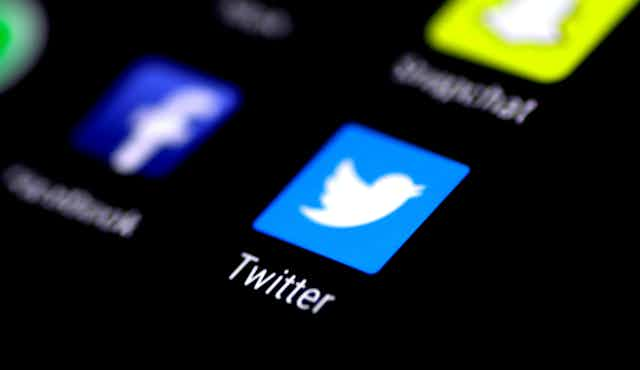The 140-character message limit has defined Twitter. But the company is now experimenting with its format, doubling the length of some users’ tweets to 280 characters. Why are they taking such an enormous risk, playing with the characteristic that defines and differentiates the service?
The reason is that Twitter’s user base has been stuck at about 320 million for some time. If this doesn’t change, entropy will set in and Twitter could collapse.
We can learn a lot about what Twitter is going through by looking at the time Coca Cola decided to change its recipe, and unveiled “New Coke”. The change was rejected by customers, and the company had to backtrack.
Another thing pushing Twitter’s move is that it reported a slight decline in users and a loss of US$116 million in the most recent quarter. It was punished by investors and put on notice, so increasing users and ad revenue are important corporate objectives.
Users still don’t want to pay
Twitter’s problem, like all social media and news platforms, comes down to the unwillingness of online users to pay. Older forms of media - newspapers and the like - are just holding on despite declining advertising revenue, but that’s becoming increasingly difficult as traditional consumers die and younger consumers expect all media to be accessible online.
By experimenting with longer messages, Twitter will be hoping to solve some of the problems faced by advertisers. At present, advertisers prefer to spend their money on other platforms because they have many more active users who are more attentive, and provide better data on how to both target consumers and evaluate impact.
The capacity to reach audiences and provide content on Twitter is severely limited by the 140-character restriction. While Twitter belatedly tackled some of the limitations of its format by allowing the addition of images, videos, and weblinks, the short message format remains restrictive for promotional communication.
Longer tweets will keep users on a screen for longer, and allow advertisers to “push” messages to users. But the risk for Twitter is that this is precisely what its most loyal users want to avoid.
Twitter urgently needs to find a way to meet the demands of its advertisers, but by doing so it risks alienating users - the people who create the network that makes Twitter valuable.
Remember Friendster? Remember MySpace? The latter’s former head of online marketing, Sean Percival, once noted that among the many mistakes made by MySpace, disrespecting users was a key one.
Most social media users treat the online space as a public service without much awareness that the vast technological enterprise that delivers it must be paid for.
Lessons from business history
Twitter might ponder what happened when Coca Cola changed the formula of its signature product in 1985.
At the time it was believed that the change was a reaction to the increased market share that Pepsi enjoyed after its hugely successful marketing campaign featuring artists such as Michael Jackson.
The New Coke formula also tested well against Pepsi in focus group studies that included 200,000 taste tests. But an account of this episode, written by Constance L. Hays, argued the real motivation behind the change was US$50 million in annual savings by reducing the use of more expensive ingredients.
In interviews with Pepsi chemists, Hays was told: “Coke turned its back on the very thing that made it great.”
While the company recovered well from the public relations crisis, and now tells a positive story about it, for a time Coca Cola was in grave danger. Tellingly, it was saved by the people who loved the product enough to pressure the company to reverse its decision. These customers organised a boycott and other public campaigns that saw the old formula restored after three months.
An important lesson for marketers from the New Coke experiment was that in spite of the rigorous market testing, other factors had to be considered. Marketers learned about the importance of habit, tradition, brand loyalty and affinity, or more simply, the truth of the adage “if it ain’t broke, don’t fix it”.
While Twitter is not selling a much loved soft drink, the tech world is also littered with cautionary tales of failure like TiVo, or the Microsoft Zune, and “tweaks” to successful products and applications that have damaged companies and brands, like Vegemite iSnack 2.0 (now rebadged as Cheeseybite).
Are they solving a problem for users?
One of the common features of both human and computer networks is that weak connections lead to network instability and breakdown. Yet this is precisely the risk Twitter is taking by changing its format. Longer messages may drive away loyal users who love the current format without attracting new users to satisfy and reassure investors and advertisers.
Many people are asking serious questions about the value of their time spent on social media and various studies show use of social media sites is starting to decline.
Creating longer messages won’t solve this problem, especially as it threatens to make Twitter even more time consuming. People will have less time to follow other users as they spend more time writing, and less time reading and sharing posts.
Twitter might be seizing the day - Carpe Diem - to change its primary product or test the waters to gauge public reaction, but it’s worth remembering that those two powerful Latin words are from a longer phrase by the poet Horace.
Dum loquimur, fugerit invida Aetas: carpe diem, quam minimum credula postero
which translates as:
While we’re talking, envious time is fleeing: seize the day, put no trust in the future
Twitter might consider Horace’s longer message before it commits to the introduction of 280-character posts. Its future may be at stake.

